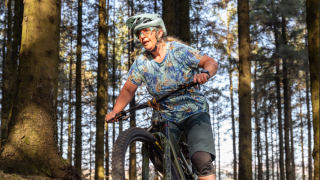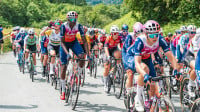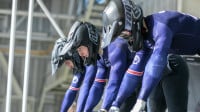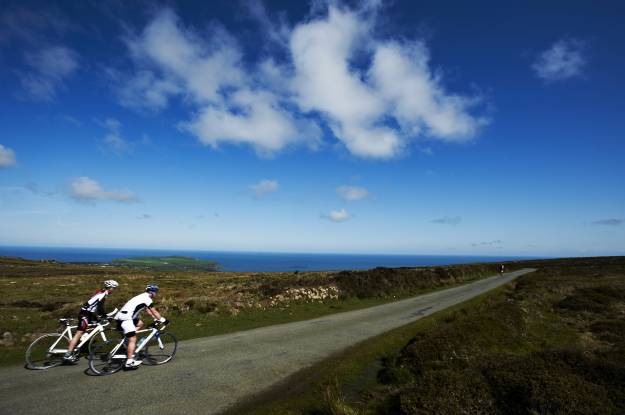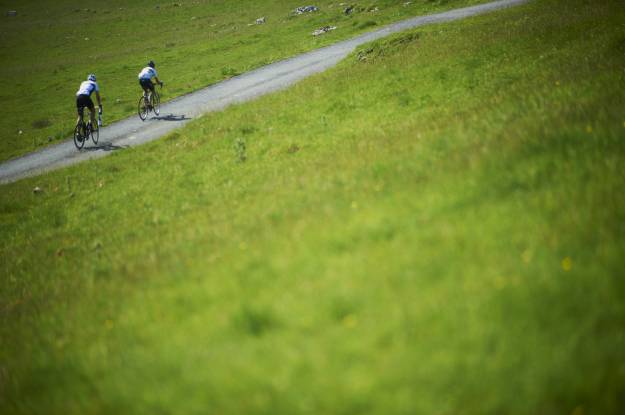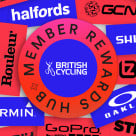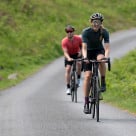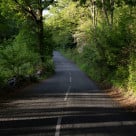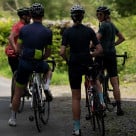Longer days, lighter kit, club meets, holidays and big rides on the calendar - summer cycling is packed with things to look forward to. But while the sunshine brings serious good vibes, it also brings challenges like strong UV, heat, and dehydration. With a bit of planning, you can stay cool, protected, and ride at your best all summer long.
General summer cycling prep:
Slap on the SPF - and make it the right one
Check out our interview with Professor Brian Diffley from the British Association of Dermatologists to find out what they recommend.
Don’t forget your ears, neck, and the backs of your hands; these small areas are often missed but are highly exposed on the bike.
Dress smart
Choose lightweight, breathable fabrics with moisture-wicking properties to keep sweat moving away from your skin.
Look for UPF-rated clothing or tightly woven fabrics that provide better UV protection than basic materials.
If you’re mountain biking and layered up, opt for a base layer that keeps you cool and dry underneath.
Accessories like caps with peaks, long finger gloves, and lightweight arm sleeves can all add extra protection without overheating you.
Hydrate and fuel well
Hydration means more than just water; you also need to replace electrolytes like sodium, potassium, and magnesium. Add an electrolyte tab to your bottle and use a thermal bottle to keep it cooler for longer. Fuel up with carbohydrates, protein, and healthy fats in the lead-up to your ride.
British Cycling members can now get SiS on the Rewards Hub
Plan for heat and pace accordingly
The sun’s UV radiation is strongest between 11am and 3pm, and your body will have to work harder in the heat. Hot weather means you should dial back your effort - use heart rate, power, and perceived exertion together to guide your ride. Early and late rides are great for dodging peak heat but remember UV can still be high.
Expert advice from GBCT
“Before the ride: hydrate properly by drinking fluids regularly in the hours leading up to your ride. Eat a balanced meal that fuels your body with carbohydrates, protein, and healthy fats.
Prepare for heat: if temperatures are high, consider lightly salting your food or adding a salty snack like pretzels to help replenish electrolytes.”
Georgina Impson Davey, Lead Performance Nutritionist with British Cycling, UK Sports Institute
Before setting off:
You are starting to get ready for your ride! Here are some final pre-ride rituals to ensure you stay safe:
- Apply your chosen SPF minutes before heading out.
- Chill your bottles in advance - freeze one halfway and top up with cold water before you go.
- Pack snacks like bananas, dried fruit, flapjacks, or energy bars.
- Take a foil emergency blanket (the silver side reflects heat!).
- Double-check your helmet fit and eyewear to keep the sun (and insects) out of your eyes.
- For riders with asthma or allergies, check the forecast for air quality and pollen counts and pack meds.
- Ensure your route includes shaded sections or planned cooling stops if you’ll be riding in peak heat.
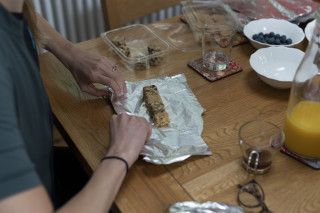
On the ride
Stay cool, hydrated, and fuelled
- Sip 500–750ml per hour - consistency is key, so don’t leave it until you’re thirsty.
- Use an electrolyte drink to maintain sodium, potassium, and magnesium levels.
- Choose drinks you like the taste of, you’re more likely to stay hydrated with flavours you enjoy.
- Cooler drinks help regulate body temperature, so insulated bottles are worth it.
- Snack regularly with high-carb options to avoid energy crashes.
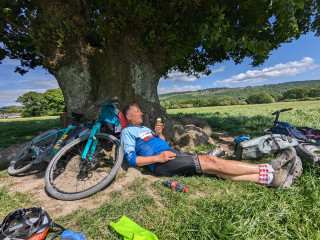
The shade is your friend
Park your bike in the shade on breaks or cover your handlebars and saddle to avoid burn risks.
Mountain bikers
Body armour is vital for keeping you safe out on the trails
All those layers might protect from falls, but heat stress is real. Choose lightweight, breathable fabrics and consider moisture-wicking base layers to better regulate your temperature. Adjust your clothing if needed and take extra stops.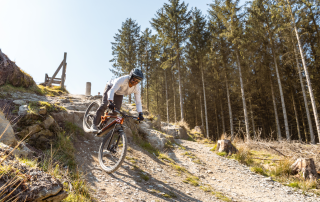
Know the signs of overheating
Watch for symptoms like dizziness, nausea, lack of sweat, confusion, or a racing heart. Stop riding, find shade, sip cool fluids, and cool your body down immediately. If symptoms worsen, seek medical help - heat stroke is a medical emergency.
After the ride
Rehydrate and refuel
Opt for a recovery meal rich in carbs and protein to repair muscles and replenish glycogen.
Cool your core
Bring your body temperature back down with a cool shower or bath, chilled drinks, and shade. Avoid basking in the sun after your ride; your body needs that cooldown period to recover.
Clean and check your kit
Air-dry your clothing and gear fully before storing it, and clean bottles/hydration packs to prevent bacteria build-up. Keeping your kit in top shape means it’ll look after you next time.
Considerations for para riders
Some impairments and medical conditions - including thermoregulatory disorders or certain medications - can increase the risk of heat stress or sun sensitivity. Chat to your healthcare provider about personalised ride strategies, and consider:
- UV-protective gloves or long sleeves for handcycling
- Neck buffs or caps to protect skin that’s more exposed in seated positions
- Cooling cloths or neck wraps for easier body temp regulation on the move
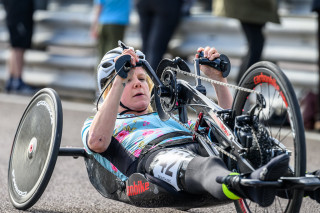
Riding with little ones
Children are more prone to overheating and sunburn. Make sure to:
- Apply SPF before you set off and reapply regularly.
- Plan short, shady stops and avoid peak sun hours where possible.
- Keep plenty of hydrating drinks and snacks on hand.
- Encourage light, loose-fitting clothing and hats when off the bike.
Sun safety is about keeping you strong, protected, and enjoying every mile. Whether you’re racing, commuting, or hitting the trails with friends, these small steps will keep you in the saddle safely.
And remember: if it’s too hot or you’re unsure how your body will react, don’t ride. There’s no shame in skipping the ride and enjoying the sunshine another way - the roads and trails will always be there tomorrow.

